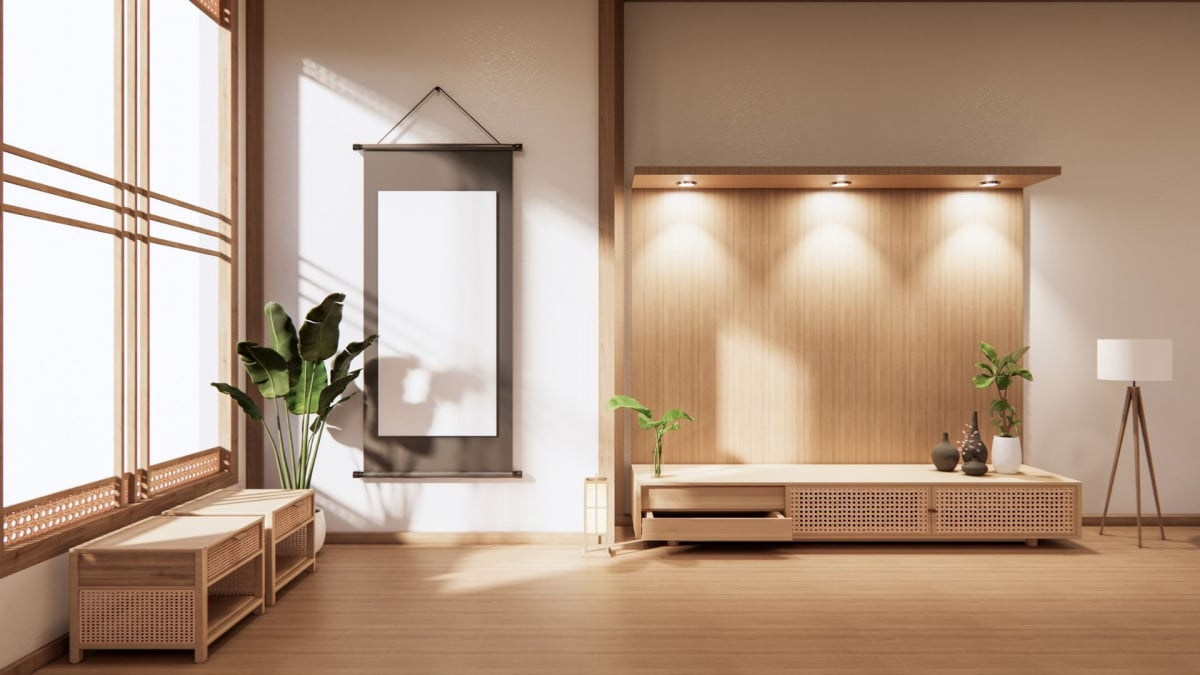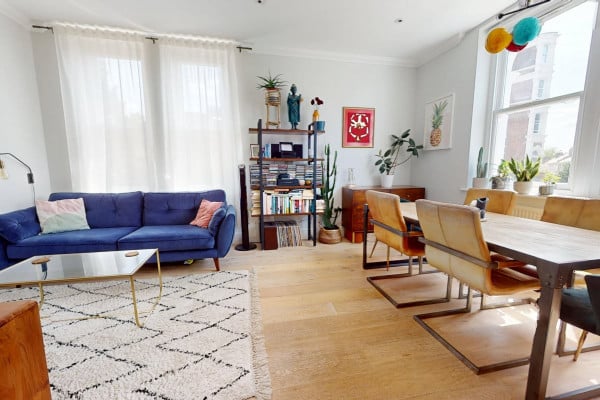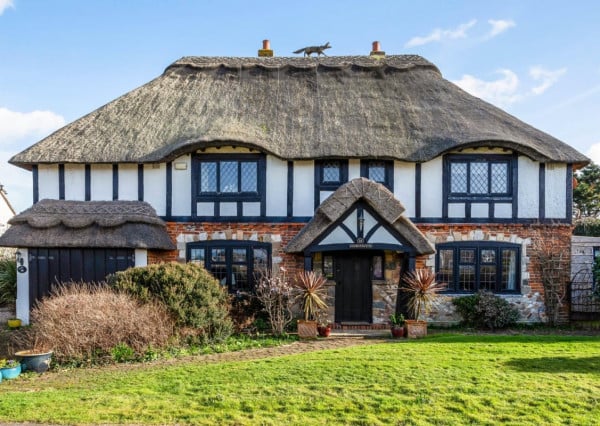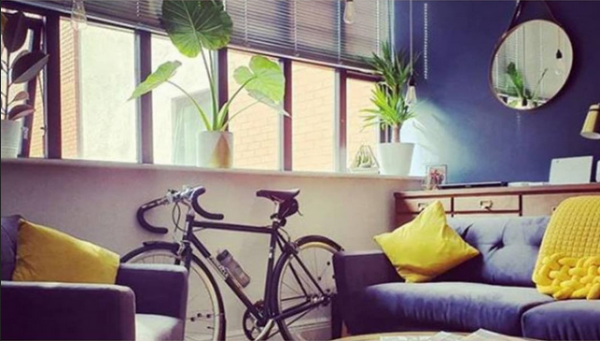6 Smart Technology Ideas for Your New Home

Embracing smart home technology is becoming increasingly popular among UK homeowners. It can be done when you move in or at the home renovating stage to boost your property's value and to appease your personal preference for clever gadgets.
In addition, adopting smart home tech will appeal to those looking to add luxury, upgrade security and get a firmer grip on their energy usage and carbon emissions. In fact, when it comes to sustainability, your property can benefit from the wide range of smart devices available.
From lighting and heating controls to entertainment and climate control, your home can be equipped with technology that integrates seamlessly together and makes your life much easier. So what exactly do you need to do when it comes to smart home technology? What ideas can you begin with when renovating your home into a high-tech oasis of enjoyment? This short guide is here to give you food for thought when considering smart home tech ideas to install.
What is Smart Home Technology?
With an estimated 2.22 million of our homes integrated with smart tech (as reported by Eco Experts), it's important to first understand what smart home technology is, as it can be a bit of a misnomer.
Smart home tech refers to the numerous interconnected devices and systems that control various functions within a home. This includes lighting and heating controls, alarms, security cameras and even staple household appliances.
Smart home devices connect to a central hub via the Internet and are often controlled and programmed through a mobile phone app, a series of voice commands, or both.
Many smart home devices are fitted with built-in sensors that allow for continuous activity and condition monitoring, such as smoke and motion detection or temperature and humidity regulation. Over time, smart home tech can learn behaviours and recognise patterns to then autonomously adjust or activate functions based on factors like time of day, natural light levels, and occupancy in and around rooms. Overall, the technology is designed to add efficiency, accessibility and control to the user through automation and remote access.
Why Smart Homes Are on the Rise
The smart home market has exploded in recent years, with more homeowners embracing interconnected technology and integrating it within their homes.
What exactly is driving the growing smart home trend? Here are some of the top factors:
- Energy efficiency - Smart thermostats, lighting and appliances allow homeowners to monitor energy use and cut costs, thus providing environmental and economic benefits.
- Convenience - Controlling functions like lights, locks and heating remotely makes life simpler, while voice control via smart speakers leads to a more hands-free experience.
- Security - Smart cameras, alarms and locks can intuitively detect and dissuade intruders and give homeowners peace of mind. Real-time alerts keep users aware of any suspicious activity regardless of where they're located.
- Independence - Smart tech helps many older adults monitor their home environment and access help easily, without the need to exert as much manual effort. As such, it's empowering elderly people to live more autonomously.
- Property value - Upgrading to smart home tech often adds resale value and can influence homeowners to make more informed long-term investments in their homes if they plan to sell them at a later date.
- Tech ecosystem - Large players like Amazon, Google and Apple enable fully integrated and immersive ecosystems for connecting different devices and platforms. Those familiar with this tech will be able to start integrating their home with smart tech more comfortably.
- Mainstream adoption - As smart home tech becomes more affordable, convenient and practical, it appeals to the average consumer.
With smart home tech getting smarter, easier to use and cheaper to access, homeowners have compelling reasons to get on board. The benefits of smart tech ensure that equipped homes will only gain traction in the years ahead.
6 Smart Home Automation Ideas to Consider
If you're looking for inspiration on how to get started with smart tech, consider these six practical and cost-effective solutions below.
1. Smart Lighting
Smart lighting is one of the most popular and accessible smart home upgrades. Smart light bulbs and switches allow you to control and automate lighting throughout your home from an app or with voice commands.
You can:
- Schedule lights to turn on or off when you're home or away.
- Adjust brightness, ambience and colour to set mood lighting.
- Voice control lighting without manually flicking switches.
- Save energy by ensuring lights get turned off during periods of low or zero occupancy.
Some top smart lighting brands to look into include Philips Hue, LIFX, and Belkin. Focus on high-use areas like bedrooms, kitchens, living rooms, and exterior lighting when looking at areas to integrate smart controls.
2. Smart Security
One of the best ways to bolster home security is by incorporating smart devices such as those outlined below:
- Smart doorbells like Ring or Nest allow you to see and speak with visitors at your door and also allow you to engage with visitors when you're not at home.
- Smart door locks allow you to control and track who comes and goes. Many locks are triggered via biometrics or via mobile phone apps, and blocking unauthorised access can be easy and reassuring if you spend long periods away.
- Smart cameras like the Blink or Arlo wire-free systems allow you to monitor activity outside and inside your home.
- Alarm systems like SimpliSafe provide 24/7 monitoring and smart sensors to detect unusual activity, including fires, leaks and trespassing.
- Smart switches can make lights turn on randomly when you're away, giving the impression that somebody is home and deterring burglars.
When looking at any smart home security technology, look for solutions that offer robust encryption, multi-factor authentication, automatic security updates, and integration with professional monitoring where relevant.
Using providers that can ensure 24/7 managed detection and response capabilities to monitor your home can also identify and stop cyber threats from exploiting vulnerabilities.
3. Smart Thermostats
Smart heating controls and thermostats allow you to regulate the temperature in your home while getting the most out of your energy usage. Smart thermostats like Nest or Ecobee can be centrally controlled via your mobile phone, with the tool learning your preferences over time.
Benefits include the ability to:
- Adjust temperatures remotely - perfect when returning home to a nice cool house on a hot day, or returning to a cosy environment after braving the cold and wet weather
- Use geofencing so the technology knows when you're home or away and can adjust accordingly
- Integrate with smart assistants like Alexa and Google Home to enable voice commands and recognition
- Get detailed insights into your home's heating and cooling usage, as well as patterns and trends
4. Smart Appliances
From washing machines to fridge-freezers, the appliances that we use every day are becoming more intuitive. Smart kitchen appliances can connect to your home WiFi and can be controlled via specific manufacturers or third-party apps, giving you more control and flexibility when using them.
Benefits include:
- Receiving notifications if you leave the fridge door open accidentally, even if it's only marginal
- Checking if your laundry is done washing or drying wherever you are
- Monitoring and controlling ovens, robotic vacuums, coffee makers and more, with voice commands and pre-set commands
Smart appliances are available from leading providers such as Samsung, LG, and GE. Think about the appliances that you use most regularly and see whether they'd benefit from a smart home app control.
5. Smart Speakers and Displays
Smart home speakers and entertainment systems bring a broad range of controls and capabilities into spaces like your lounge, bedroom, and dining room.
Products like the Amazon Echo and Google Home offer the following benefits:
- Voice control of compatible smart home devices, including speakers, soundbars, and televisions
- Access to information, weather, calendars, shopping lists and more through voice commands, using the Internet as a backbone
- Real-time visual feedback and camera monitoring
- Whole home audio streaming from services like Spotify, YouTube Music, and Amazon Music
6. Smart Climate Control
Making your home's heating, cooling, and air quality smarter provides greater comfort while optimising energy efficiency.
Such options include the following:
- Smart vents that allow room-by-room temperature control from an app
- Smart air conditioning units that you can adjust and turn on before arriving home
- Smart humidifiers and dehumidifiers to maintain optimal room comfort
- Smart air purifiers which remove allergens and monitor air quality
- Smart ceiling fans that are adjustable via mobile apps and voice control
Adjust the temperature, airflow, and air purity in your home wherever you are to ensure that your home is as comfortable as possible when you return.
Key Considerations for a Smart Home
When planning out your smart home upgrades, make sure you are considering the compatibility of your various solutions. Choosing platforms that can coexist with other systems and devices (manufactured by different providers) will be critical for obtaining unified control. Mixing incompatible services can be complicated and challenging.
You'll need to ensure all your devices are powered by strong, secure, reliable WiFi connectivity for them to work properly. Make sure your network is stable and offers plenty of bandwidth to allow multi-device usage.
Determine how much you want to spend on your smart home overhaul and renovation project. Choose the essentials first and add the luxuries later on, and consider how you can make the most of your available budget. In addition, factor in any in-person installation work from electricians and other tradespeople, who may be needed to install complex, multi-layered systems. Most devices will be self-installed, like speakers and lighting controls but high-grade solutions may need a professional's input.
Finally, don't ignore basic security controls to keep your devices and estate secure and free from cyber threats. Patch and update all your software, back everything up with multi-factor authentication (MFA) and stabilise your WiFi-enabled devices with stronger passwords.
It's evident that smart home technology provides plenty of convenience, safety, comfort and entertainment benefits, not to mention allowing homeowners to make wiser choices on their energy usage.
Consider your budget, needs, and long-term goals with your home and approach each facet strategically. Start with practical, high-value improvements like smart lighting and heating, before moving on to smart appliance upgrades and creating immersive entertainment systems. With the right approach, you can enjoy your smart home for years to come, and make your investment back (and then some) when the time comes to sell.

When Property Offers Fall Through: A Guide for Sellers and Buyers
25.06.2025One of the biggest worries for anyone buying or selling a home is the possibility of the deal falling through. And it's a valid concern - nearly 29% of property sales in the UK didn't make it to completion in 2024. Whether due to cold feet, poor survey results, or mortgage issues, it's more common than most people think.

The Best Building Survey if You're Buying an Older Property
05.06.2025Buying a property is a big decision by anyone's standards, which is why it's important to view one with a practical hat on rather than being ruled by your heart.

Hidden Costs Revealed: What Your Survey Might Uncover
21.07.2024Buying a home is a major financial commitment and for most of us, it's the biggest purchase we'll ever make. Whether this is your first time stepping on the property ladder, you're an existing homeowner or you're investing in a property for commercial purposes, checking things out thoroughly is always essential. One of the most effective tools to assist with this is a property survey but, what might a survey uncover and how will that affect your property purchase?

How to save money when buying a home
05.05.2024So, you're thinking of buying a new home? That's great news! Is it a trendy three-bed terrace in a cul-de-sac? Or do you fancy a penthouse apartment with city views? Whatever the property type, we're sure you're excited about your soon-to-be new home.
.png)
How Long is a Property Chain?
22.04.2024In case you don't know by now, a property chain is when multiple transactions are linked together and need to be completed at the same time for each sale to be successful. However, many buyers and sellers often wonder about the length of a property chain.
.png)
How to Get a Bigger Mortgage
22.04.2024Unfortunately, bagging your dream home can be curtailed by a number of things. Being unable to get a big enough mortgage can be an issue that arises.









